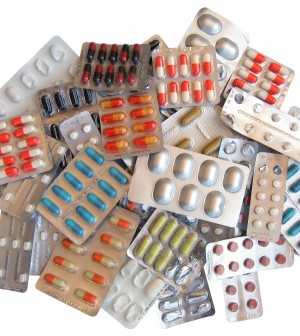- Navigating Your Midlife Crisis: Embracing New Possibilities
- City Raccoons Showing Signs of Domestication
- Mapping the Exposome: Science Broadens Focus to Environmental Disease Triggers
- One Week Less on Social Media Linked to Better Mental Health
- Your Brain Changes in Stages as You Age, Study Finds
- Some Suicide Victims Show No Typical Warning Signs, Study Finds
- ByHeart Formula Faces Lawsuits After Babies Sickened With Botulism
- Switch to Vegan Diet Could Cut Your Greenhouse Gas Emissions in Half
- Regular Bedtime Does Wonders for Blood Pressure
- Dining Alone Could Mean Worse Nutrition for Seniors
Doctors Save Life of U.S. Child With Drug-Resistant Tuberculosis

A 5-year-old child from the United States, stricken at age 2 with a deadly form of tuberculosis after traveling to India, is finally in remission, researchers report.
The case, one of only a handful reported in the medical literature, highlights the difficulties of treating an extensively drug-resistant form of tuberculosis, known as XDR TB, in children, the researchers said.
The case also highlights the growing global threat of this virulent form of TB and the risk to Americans traveling in countries where there is a high burden of disease.
A detailed account of the child’s diagnosis and treatment, and the obstacles that clinicians at Johns Hopkins Children’s Center in Baltimore faced, was published in the Nov. 16 online edition of The Lancet Infectious Diseases.
Study co-author Dr. Sanjay Jain, an associate professor of pediatrics and international health at Johns Hopkins University, said the case is a “wake-up” call to scientists and the public at large.
Even with the best medical care in the world, “it was tough for us to diagnose and treat this patient,” Jain said. “What would it be for the rest of the world?”
Some experts have called this highly drug-resistant form of TB “Ebola with wings” because the disease is airborne and the mortality rate is higher, said Dr. Jennifer Furin from the department of global health and social medicine at Harvard Medical School in Boston.
However, Furin, who is currently on assignment with Doctors Without Borders in South Africa, said she was struck by the amount of attention this particular case garnered. She and her colleagues in Cape Town see hundreds of children who are infected with drug-resistant strains of TB each year, and yet very little attention is paid to their plight.
“There is significant international experience in the management of children with [drug-resistant] TB, and it was a bit surprising to me that this was not utilized by the authors of the study nor cited in their references,” she said.
Furin said she hopes the case brings more attention to the problem, and that there will be greater U.S. engagement with providers internationally who have given care to hundreds of children with drug-resistant TB.
Extensively drug-resistant TB, caused by strains of bacteria that don’t respond to multiple drugs, is becoming increasingly prevalent, accounting for an estimated 10 percent of multidrug-resistant cases globally, the study authors said.
“Children are especially vulnerable because once infected, they fall sick faster with TB than adults,” explained Mercedes Becerra, an associate professor in the department of global health and social medicine at Harvard.
Fighting this virulent form of the lung disease in children raises a number of hurdles, including a lack of speedy and reliable techniques for definitively diagnosing the disease. Existing tests are much less sensitive in young children than adults, Jain explained.
In this case, the child returned from India with high fevers and a spot on her lung, hinting at the problem.
Although initial testing came back negative for TB, her medical team treated her as if she had the disease.
Her condition improved at first, but a repeat X-ray revealed unrelenting inflammation in her lung. Repeat lab tests confirmed, after 12 weeks, that she harbored an extensively drug-resistant form of the disease.
Clinicians tried a new cocktail, combining five different drugs plus vitamin B6, but soon encountered another hurdle: How would they monitor her response to treatment?
The answer: By repeatedly administering low-dose CT scans over six months.
“The CT scanning technique is not novel, but its use to monitor TB treatment in such a way is somewhat new,” Jain said.
Cases like this one underscore the need for additional research and investment, a number of experts noted.
“We need more research and we need to develop pediatric-appropriate diagnostic tests and child-friendly formulations of anti-TB drugs,” added Dr. James Seddon, clinical lecturer in the department of pediatric diseases at Imperial College in London.
More information
Find out more about drug-resistant TB at the U.S. Centers for Disease Control and Prevention.
Source: HealthDay
Copyright © 2025 HealthDay. All rights reserved.










